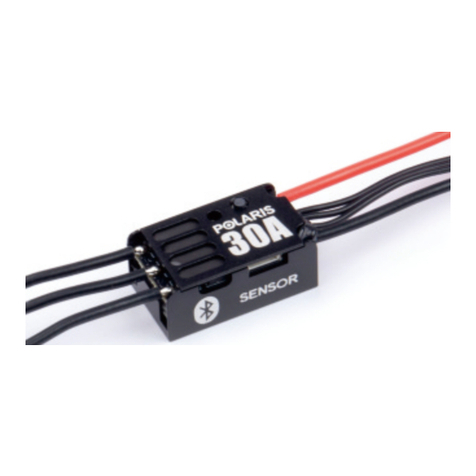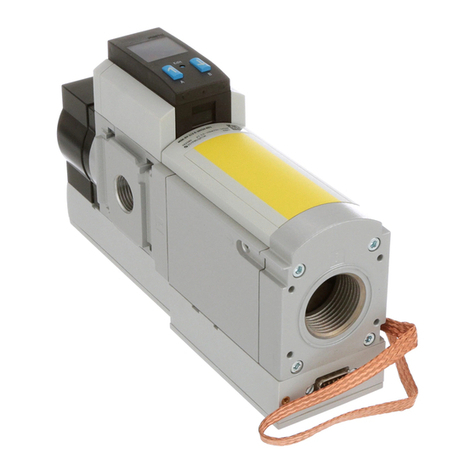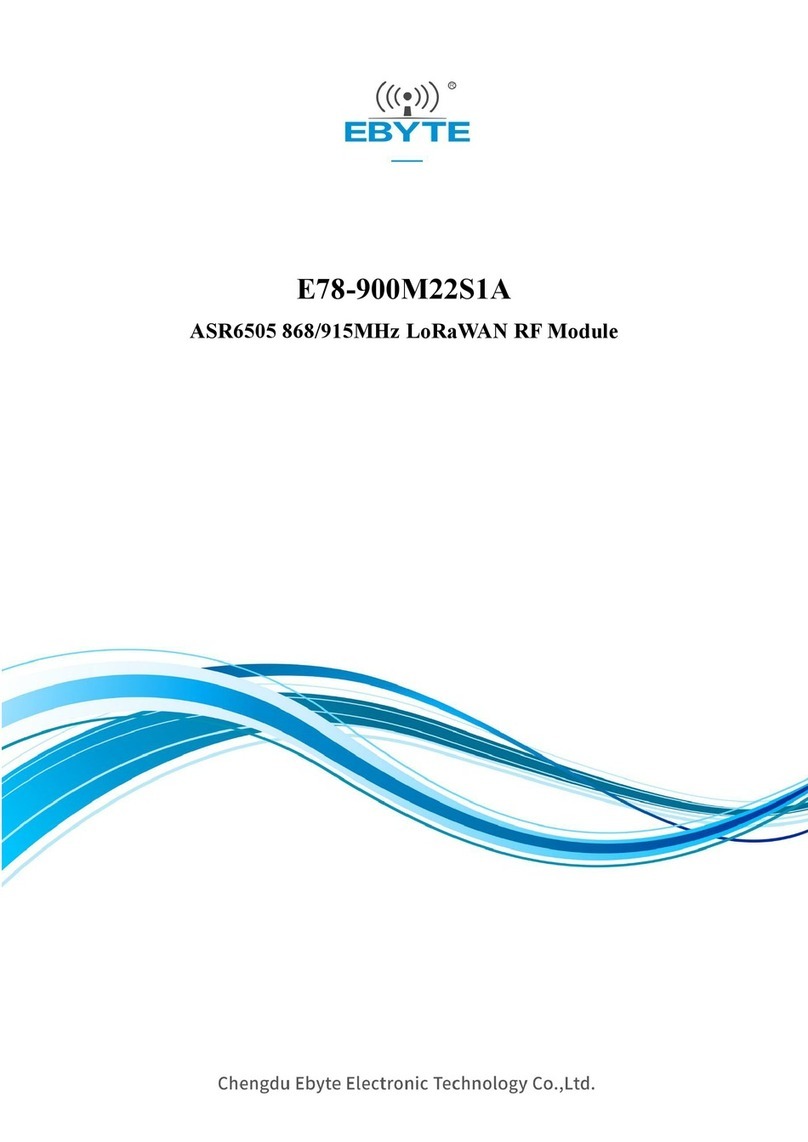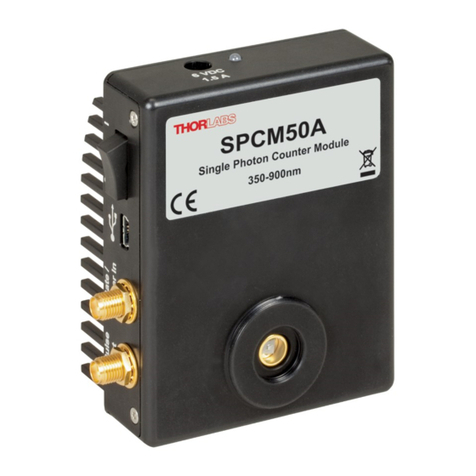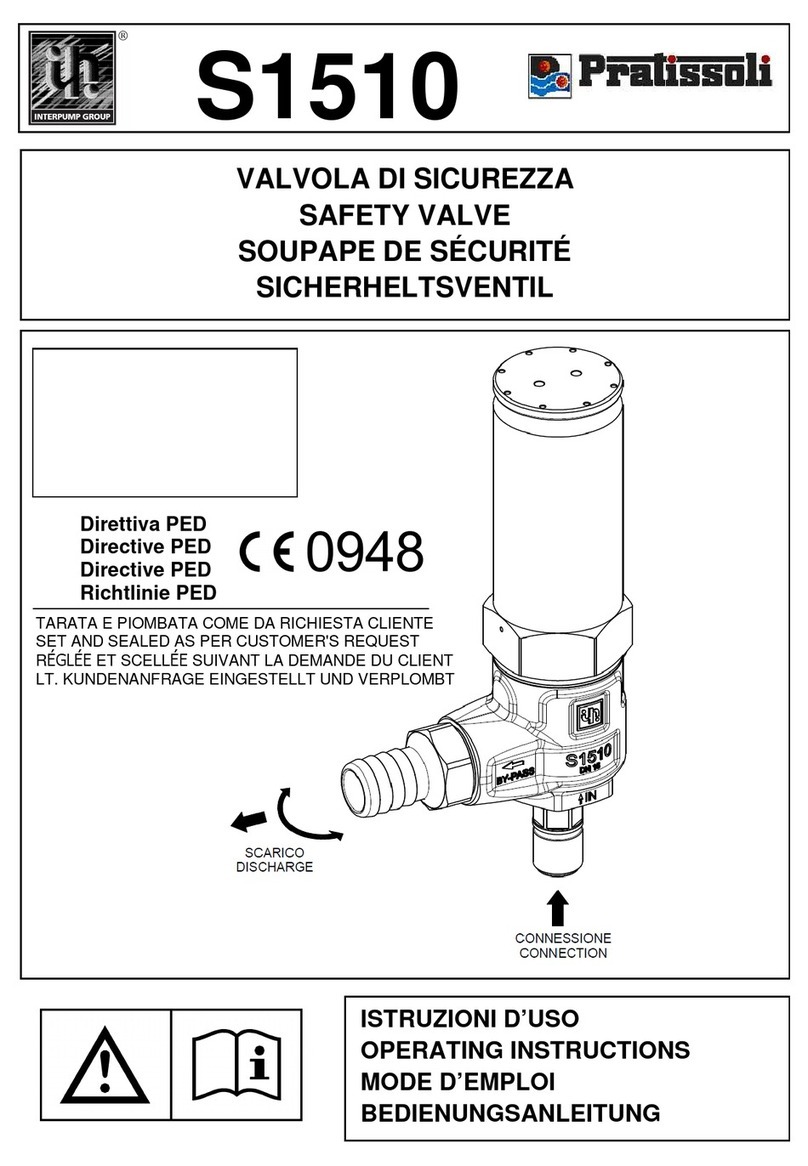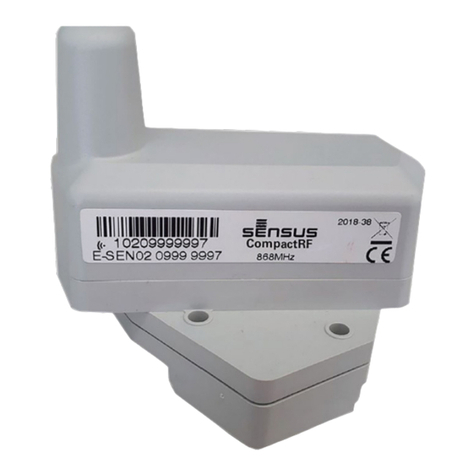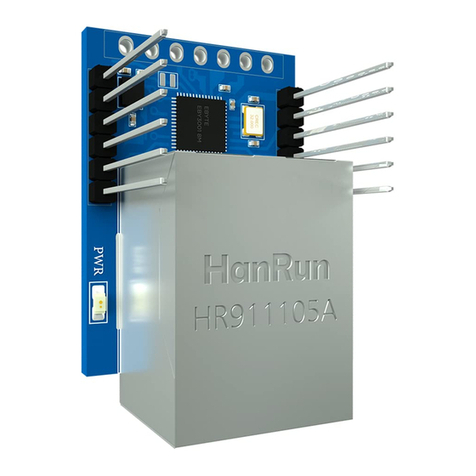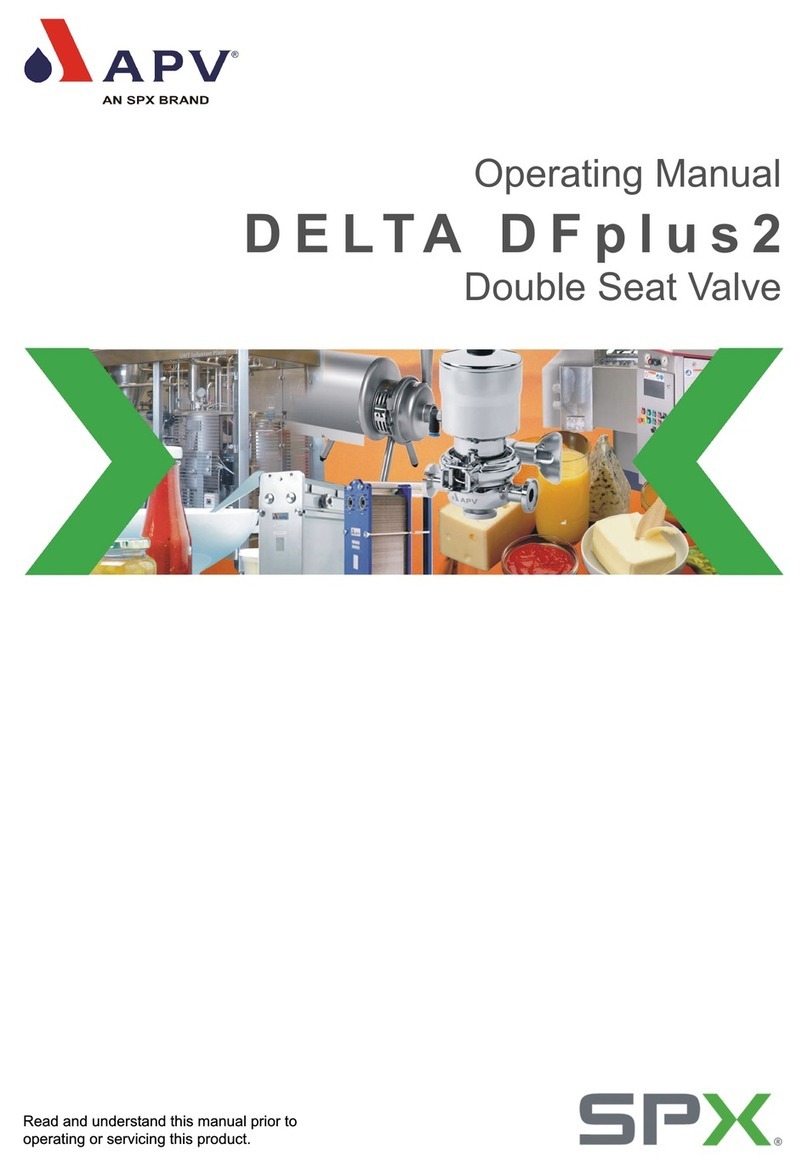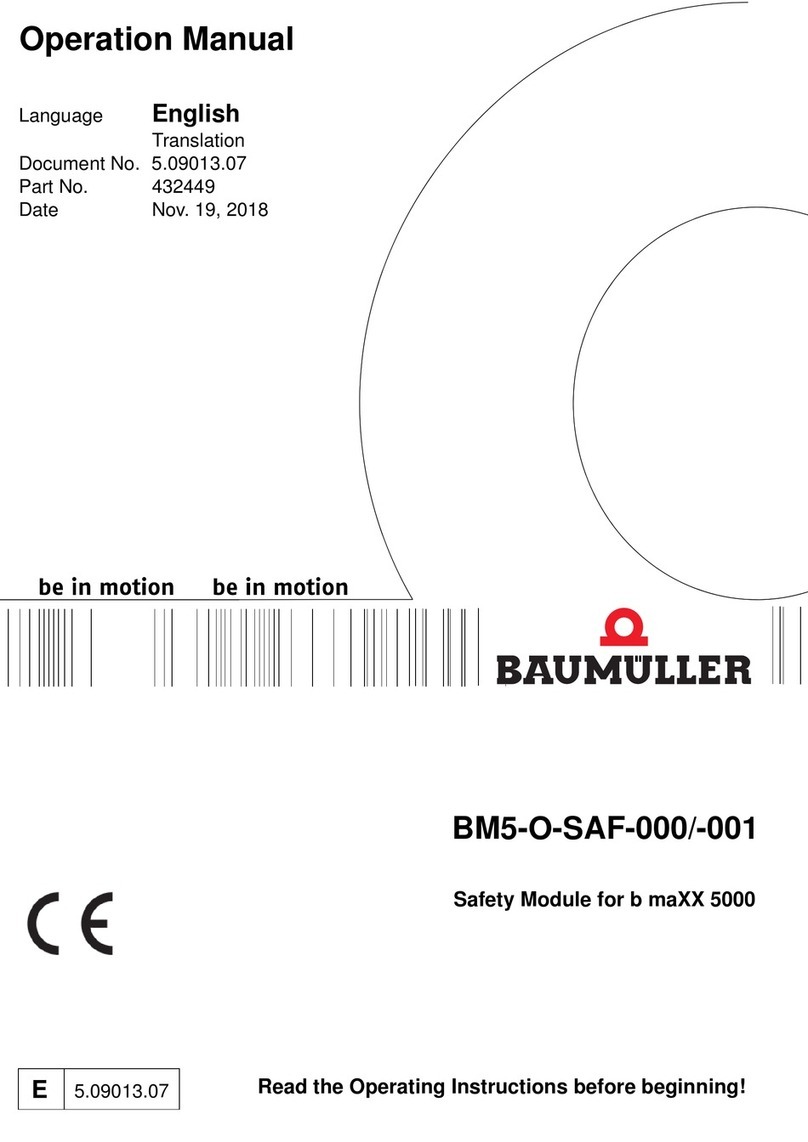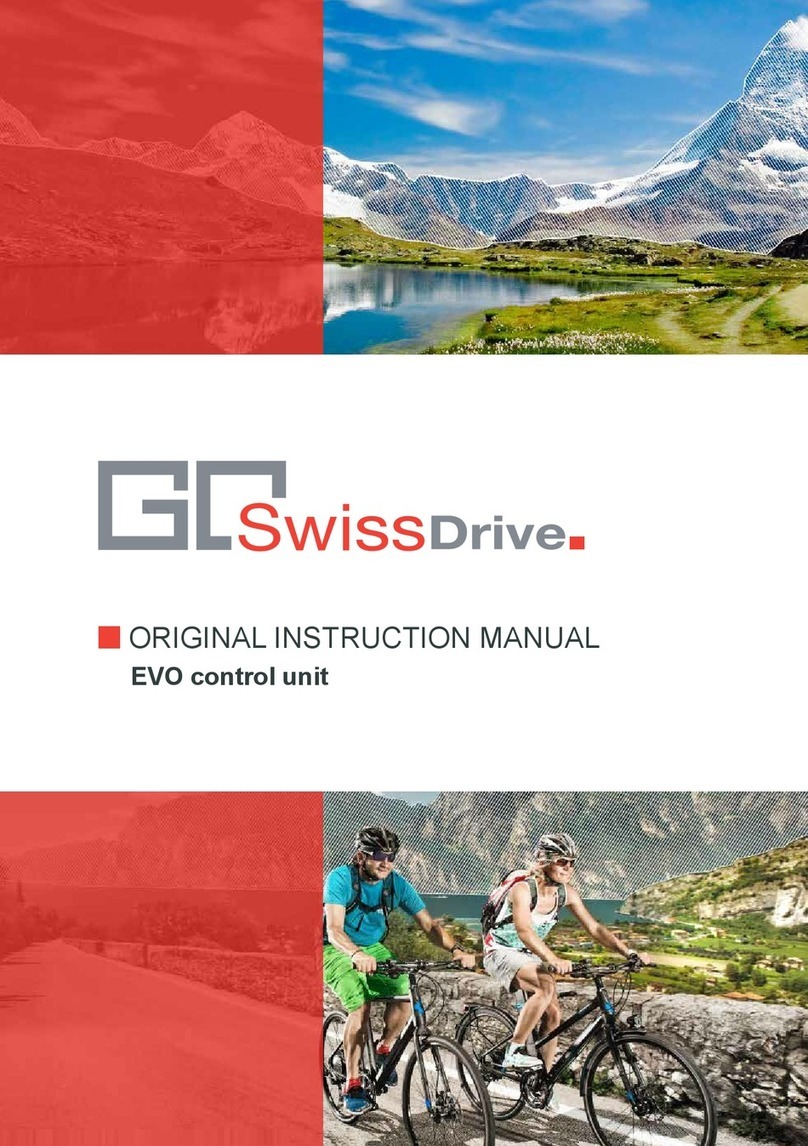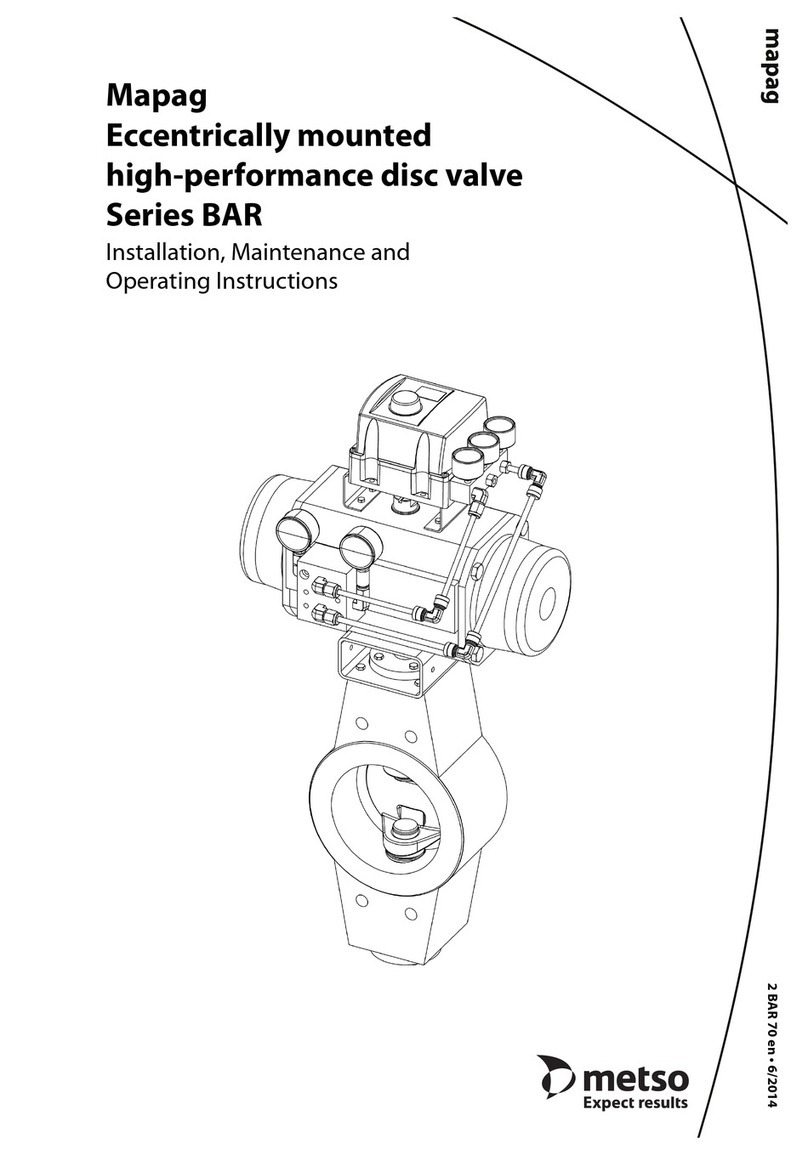Bontempi ROCK DRUMMER PARTNER User manual

GB - INSTRUCTION MANUAL ....................................................5
F- MANUEL D’INSTRUCTIONS ................................................8
D- BEDIENUNGSANLEITUNG ................................................11
E- MANUAL DE INSTRUCCIONES .........................................14
P- MANUAL DE INSTRUÇÃO.................................................17
I- MANUALE DI ISTRUZIONI.................................................20
GB – ELECTRONIC RHYTHM "PARTNER" MODULE
F– MODULE "PARTNER" ELECTRONIQUE
D– ELEKTRONISCHEM "PARTNER" – MODUL
E– MODULO ELECTRONICO "PARTNER"
P– MODULO ELECTRONICO "PARTNER"
I- MODULO "PARTNER" ELETTRONICO

2
GB - TECHNICAL SPECIFICATIONS
F - SPECIFICATIONS TECHNIQUES
D - TECHNISCHE DATEN
E - CARACTERISTICAS TECNICAS
P - CARACTERÍSTICAS TÉCNICAS
I - SPECIFICHE TECNICHE
ELECTRONIC RHYTHM TUTOR with 7 basic rhythms, 14 songs, 4 learning levels, light and sound impulses.
CONTROLS: Start, Stop, Selectors for songs, rhythms and learning levels, Volume +/–, On/Off.
AMPLIFICATION: Mono, one high efficiency loudspeker of 50 mm (2 inc.) diameter.
POWER SUPPLY: 3 x 1,5V R6/AA batteries (not included).
SOCKETS: mic. (for headset microphone) and line in (for MP3, CD Player etc. - not included)
DIMENSIONS: 630 x 400 x 800 mm. (24,8 x 15,75 x 31,5) inc.
WEIGHT: 5 Kg. (11 lbs.)
MODULE “PARTNER” ÉLECTRONIQUE avec 7 rythmes, 14 chansons, 4 niveaux d’apprentissage, impulsions lumineuses et sonores.
CONTRÔLES: Start/Stop, Selecteurs pour chansons, rythmes et niveaux d’apprentissage, Volume +/–, On/Off.
AMPLIFICATION: Mono, un haut-parleurs à efficience élevée
Ø
50 mm.
ALIMENTATION: 3 piles de 1,5V R6/AA (non fournies).
PRISES: mic. (pour micro à casque) et line in (pour MP3, CD Player etc. - non inclus)
DIMENSIONS: 630 x 400 x 800 mm.
POIDS: 5 Kg.
ELEKTRONISCHES “PARTNER”-MODUL mit 7 Rhythmen, 14 Lieder, 4 Lernstufen, Licht-und Tonimpulse.
KONTROLLEN: Start/Stop, Lieder, Rhythmen und Lernstufen Wählschalter, Volume +/–, On/Off.
VERTÄRKUNG: Mono, Ein hochleistungsfähige Lautsprecher
Ø
50 mm.
STROMVERSORGUNG: 3 x 1,5V (R6/AA) Mignonbatterien (nicht enthalten).
BUCHSEN: mic. (für das Headsetmikrofon) und line in (für MP3, CD Player etc. - nicht enthalten)
MASSE: 630 x 400 x 800 mm.
GEWICHT: 5 Kg.
MÓDULO ELECTRÓNICO “PARTNER” 7 ritmos, 14 melodías, 4 niveles de aprendizaje, impulsos de luz y sonidos.
CONTROLES: Start/Stop, Selectores para melodías, ritmos y niveles de aprendizaje, Volume +/–, On/Off.
AMPLIFICACIÓN: Mono, un altavoces de alta eficiencia
Ø
50 mm.
ALIMENTACIÓN: 3 pilas de 1,5V R6/AA (no incluidas).
ENCHUFES: mic. (para micrófono casco) y line in (para MP3, CD Player etc. - no incluidos)
DIMENSIONES: 630 x 400 x 800 mm.
PESO: 5 Kg.
GUIA ELECTRÓNICO “PARTNER” 7 ritmos, 14 canções, 4 níveis de aprendizagem, pulsos de luzes e sons.
CONTROLES: Start/Stop, Seletores para canções, ritmos e níveis de aprendizagem, Volume +/–, On/Off.
AMPLIFICAÇÃO: Mono, un altifalantes de alta eficiência
Ø
50 mm.
ALIMENTAÇÃO: 3 pilhas de 1,5V R6/AA (não fornecidas).
TOMADAS: mic. (para microfone de capacete) e line in (para MP3, CD Player etc. - não fornecidos)
DIMENSÕES: 630 x 400 x 800 mm.
PESO: 5 Kg.
MODULO “PARTNER” ELETTRONICO con 7 ritmi, 14 canzoni, 4 livelli di apprendimento, impulsi di luci e suoni.
CONTROLLI: Start/Stop, Selettori per canzoni, ritmi e livelli di apprendimento, Volume +/–, On/Off.
AMPLIFICAZIONE: Mono, un altoparlante ad alta efficienza
Ø
50 mm.
ALIMENTAZIONE: 3 batterie da 1,5V R6/AA (non fornite).
PRESE: mic. (per microfono a casco) e line in (per MP3, CD Player etc. - non forniti)
DIMENSIONI: 630 x 400 x 800 mm.
PESO: 5 Kg.

3
GB - This toy must be assembled by adults.
F- Ce jouet doit être assemblé par un adulte.
D- Dieses Spielzeug muß von einem Erwachsenen montiert werden.
E- Este jugueto lo debe montar un adulto.
P- Este brinquedo deve ser montado por um adulto.
I- Questo giocattolo deve essere montato da un adulto.
GB/USA – ELECTRONIC RHYTHM "PARTNER" MODULE - ASSEMBLY INSTRUCTIONS
F – MODULE "PARTNER" ELECTRONIQUE - INSTRUCTIONS POUR LE MONTAGE
D – ELEKTRONISCHEM "PARTNER" – MODUL - MONTAGEANWEISUNGEN
E – MODULO ELECTRONICO "PARTNER" - INSTRUCCIONES PARA EL MONTAJE
P – MODULO ELECTRONICO "PARTNER" - INSTRUÇÕES DE MONTAGEM
I - MODULO "PARTNER" ELETTRONICO - ISTRUZIONI DI MONTAGGIO

4
GB/USA - COMPLETE TITLE OF THE MEMORIZED SONGS
F - TITRES COMPLETS DES CHANSONS MEMORISEES
D - KOMPLETTE TITEL DER GESPEICHERTEN LIEDER
E - COMPLETA TITULOS DE CANCIONES MEMORIZADAS
P - TITULO COMPLETO DAS CANÇÕES MEMORIZADAS
I - TITOLI COMPLETI DELLE CANZONI IN MEMORIA
SONGS 1
1 - MARY HAD A LITTLE LAMB
2 - WHEN THE SAINTS GO MARCHING IN
3 - LONDON BRIDGE
4 - OH! SUSANNA
5 - CARIOCA
6 BROTHER JOHN
Frère Jacques - Fra' Martino
Broder Jacob - Meister Jacob
Vader Jacob
7 - SILENT NIGHT
Astro del ciel - Stille Nacht - Douce
nuit - Noche de paz - Stilla Natt
SONGS 2
1 - TWINKLE LITTLE STAR
Brilla stellina - Blinka lilla stjärna
Brille brille pétite étoile
2 - JINGLE BELLS
Din, don, dan - Vive le vent -
Bjällerklang
3 - ALOUETTE
4 - OLD MC DONALD HAD A FARM
Nella vecchia fattoria
5 - LA CUCARACHA
6 - ODE TO JOY
Inno alla gioia
7 - HAPPY BIRTHDAY
Tanti auguri

5
ELECTRONIC GUIDE
A friend teaching you to play your drum set immediately
The electronic guide will slowly help you to play the drums
It has 14 songs, 7 selectable rhythms with 4 levels of difficulty in its memory.
ELECTRONIC GUIDE SUPPLY
The electronic guide is battery-operated. Open the battery
compartment. Insert 3 x 1,5V batteries R6/AA (not inclu-
ded). Re-fit battery cover. Replace batteries when the quality
of sound becomes bad. Use alkaline batteries to obtain a
longer duration. LED indicator on when instrument in use.
ATTENTION - BATTERY CARE
Non-rechargeable batteries are NOT to be recharged. • Rechargeable batteries must be removed from the
product before being charged. • Rechargeable batteries are only to be charged under adult supervision. •
Different types of batteries or new and old batteries are not to be mixed. • Use only batteries of the same or
equivalent type. • Batteries are to be inserted with correct polarity. • Remove exhausted batteries to prevent
leakage. • Do not short circuit supply terminals. • Remove batteries during long periods of non-use.
WASTE DISPOSAL STANDARDS
For information regarding the disposal of the items mentioned here below, please refer to Council
Administration office regarding specialised waste collection centres.
1. DISPOSAL OF BATTERIES
Protect the environment by disposing of batteries in the special containers provided for this
use.
2. PACKAGING DISPOSAL
Take the paper, cardboard and corrugated board to the appropriate waste collection centres. Plastic mate-
rial must be placed in the relevant collection containers.
The symbols indicating the various types of plastic are:
Key for the different types of plastic materials:
PET= Polyethylene terephtalate • PE= Polyethylene, code 02 for PE-HD, 04 for PE-LD • PVC =Polyvinyl chlo-
ride • PP= Polypropylene • PS= Polystyrene, Polystyrene foam • O= Other polymers (ABS, Laminates, etc.)
3. DISPOSING OF ELECTRICAL APPLIANCES
The wheelie bin symbol with a cross indicates that the product must not be disposed of in the
domestic waste at the end of its useful life. Instead, it should be taken to your nearest designated
collection point or recycling facility. Alternatively, check with your retailer and return the product
when buying a replacement, on a one-to-one basis or as free of charge in case the size is smaller
than 25 cm. Appropriate disposal promotes the recycling of parts and materials, as well as helping
to protect the environment and human health. Under current legislation, strict penalties are enforced
against those disposing of products illegally. For more information about the collection of special waste,
contact your Local Authority.
E N G L I S H
01
PET
02
PE
03
PVC
05
PP
06
PS
07
O

6
SWITCHING ON/OFF
To switch on the instrument move selector POWER bto on. To switch the instrument off move the same
selector to off.
The instrument is equipped with AUTO POWER OFF, which means that it switches off automatically after a
few seconds if not used. Press any button to switch it back on.
USE OF THE ELECTRONIC GUIDE
To listen to a rhythm or a song press the START/STOP cbutton or one of the seven rhythm buttons e.
To interrupt press the START/STOP button.
To lower or raise the volume use the VOLUME + / – command a.
SELECTION OF A RHYTHM
The rhythms are ROCK, SWING, MARCH, COUNTRY, SAMBA, DANCE and WALTZ. They are selected and
started by pressing the corresponding button e.
The lights lindicate which percussion instruments must play.
To stop the rhythm press the START/STOP button c.
Using the SELECT button g, you can choose between the 4 levels of difficulty h: LEVEL 1, LEVEL 2,
LEVEL 3 and LEVEL 4. The selection must be made with the rhythm at a standstill.
SELECTION OF A SONG
14 songs fare memorised in the instrument that are the ‘base’ for your drum playing. To choose a song
press the SELECT button gseveral times until the light of SONG 1 or SONG 2 killuminates and then
press the button with the number corresponding e to the desired song. The piece is preceded by an intro-
duction. The lights lindicate which percussion instruments must play. To stop the song press the
START/STOP button. The selection must be made with the song at a standstill.
ab
c
d
e
f
g
h
i
j
k
l

7
CD
MP3
Connecting cable (included)
(not included)
Headset microphone
(included)
GRADUAL LEARNING
Do not worry if at the beginning your learning, some drum or tambourine beats are not perfect.
You can start to learn from an easier level.
LEVEL 1 rhythm speed is slower and therefore you can play your drums following the lights in an easier
manner. LEVEL 4 is the most complex rhythm.
To choose the various LEVELS, use the SELECT gbutton when the rhythm is at a standstill.
As you improve you can increase the difficulty by choosing the successive levels.
CONNECTING THE MICROPHONE HEADSET, MP3 PLAYER, CD PLAYER etc.
1. CONNECTING THE MICROPHONE HEADSET (supplied)
Insert the microphone plug into the mic. socket j.
Warning!: To avoid“feed back” please place the microphone as far from the speaker das possible. Wear
the headset microphone as indicated in the figure and position the microphone as near to your mouth
as possible.
2. CONNECTING THE MP3 PLAYER, CD PLAYER ECC. (not supplied)
The cable supplied allows you to connect a music (mp3, CD) player to the
line in iconnection;
Reproduction will be monophonic like the instrument;
TROUBLE SHOOTING GUIDE
Problem Solution
The instrument doesn’t work or
distorted sound
Microphone doesn’t work
No sound can be heard from the
external music source
Batteries low – fit new batteries.
Batteries incorrectly fitted – check.
Check that the jack-pin is inserted.
Check that the jack has been inserted.
Check that the volume of the external musical.
ATTENTION: in the case of malfunctioning remove and re-insert the batteries

8
GUIDE ELECTRONIQUE
Un ami qui vous apprend à jouer tout de suite votre batterie
Le guide électronique doit te guider progressivement dans l’apprentsissage de la batterie.
Il contient 14 chansons mémorisées et 7 rythmes sélectionnables sur 4 niveaux de difficultés.
ALIMENTATION DU GUIDE ELECTRONIQUE
Le guide électronique fonctionne avec alimentation par piles.
Ouvrir l’emplacement porte-piles. Brancher 3 piles de 1,5V type
R6/AA (non fournies) et remettre le couvercle. Substituer les piles
quand la qualité du son devient mauvaise. Utiliser des piles alcali-
nes pour obtenir une longue durée. Le témoin lumineux allumé
indique que l’instrument est en fonction.
CONSEILS POUR L’UTILISATION DES PILES
Enlever les piles déchargées de l’emplacement porte-piles. • NE PAS recharger des piles qui ne sont pas
“rechargeables”. • Pour recharger les piles, les enlever de leur emplacement. • Recharger les piles avec la
supervision d’un adulte. • Insérer les piles avec la polarité correcte. • Ne pas utiliser des types de piles
différents ou des piles neuves et piles déchargées en même temps. • Utiliser seulement des piles du type
recommandé ou équivalentes. • Ne pas court-circuiter les terminaux d’alimentation. • Enlever les piles
quand l’instrument n’est pas utilisé pendant une longue période.
REGLES POUR ECOULEMENT DES ORDURES
Pour l’écoulement des matériaux indiqués ci-dessous, se renseigner auprès des Administrations
Communales au sujet des centres d’écoulement spécialisés.
1. ELIMINATION DES PILES
Pour la sauvegarde de l’environnement, les piles déchargées, ne doivent pas être jetées aux
ordures mais dans des récipients spéciaux.
2. ECOULEMENT DES EMBALLAGES
Remettre les emballages en papier, carton et carton ondulé dans les centres d’écoulement spécifiques. Les
parties en plastique de l’emballage doivent être placées dans les conteneurs pour la récolte prévus à cet
effet.
Les symboles qui repèrent les différents types de plastique sont:
Légende relative au type de matériau plastique:
PET = Polyéthylène téréphtalate • PE= Polyéthylène, le code 02 pour PE-HD, 04 pour PE-LD • PVC= Chlorure
de Polyvinyle • PP= Polypropylène • PS= Polystyrène, Polystyrène expansé • O= Autres polymères (ABS,
Couplés, etc.)
3. DISPOSITION POUR APPAREILS ÉLECTRIQUES
Le symbole de la poubelle à roues avec une croix indique que le produit ne doit pas être déposé
dans les ordures ménagères à la fin de son cycle. Il doit être mis dans un point de collecte ou de
recyclage approprié. A défaut, vérifier avec votre revendeur et retourner le produit lors de l’achat
du produit de remplacement ou, si la dimension est inferieur à 25 cm, on peut le retourner gratu-
itement. La disposition appropriée promeut le recyclage des parties et des matériels, aussi bien quel ‘aide
pour protéger l’environnement et la santé humaine. Conformément à la législation actuelle, des pénalités
strictes sont faites contre ceux disposant des produits illégalement. Pour plus d’informations sur la collecte
de déchets spéciaux, contacter la Collectivité locale.
F R A N Ç A I S
01
PET
02
PE
03
PVC
05
PP
06
PS
07
O

9
ALLUMAGE/ARRET
Pour allumer l’instrument positionner l’interrupteur POWER bsur on, pour l’éteindre sur off.
L’instrument possède une fonction AUTO POWER OFF, ce qui signifie qu’il s’éteind automatiquement après
quelques instants de non utilisation. Pour l’allumer de nouveau, il suffit d’appuyer sur n’importe quelle
touche.
UTILISATION DU GUIDE ELECTRONIQUE
Pour écouter directement un rythme ou un chanson, appuies sur le bouton START/STOP cou sur l’un des
sept boutons de rythme e. Pour interrompre l’exécution, appuies sur le bouton START/STOP. Règles
ensuite le volume en utilisant la commande VOLUME + / – a.
SELECTION DES RYTHMES
Les rythmes sont ROCK, SWING, MARCH, COUNTRY, SAMBA, DANCE et WALTZ. Utilise le bouton corre-
spondant epour sélectionner et lancer le rythme. Les voyants lindiquent quels instruments de
percussion tu dois jouer. Pour arrêter le rythme, appuies sur le bouton START/STOP c. A l’aide du bou-
ton SELECT g, tu peux choisir 4 niveaux de difficultés h: LEVEL 1, LEVEL 2, LEVEL 3 et LEVEL 4. Les
sélections se font lorsque le rythme est terminé.
SELECTION DES CHANSONS
14 chansons fsont mémorisées dans l’instrument, elles pourraient servir de “ base “ pour tes débuts à la
batterie.
Pour choisir une chanson, appuies sur SELECT gplusieurs fois jusqu’à ce que les lumières de SONG 1 ou
de SONG 2 ks’allument, puis appuies sur le bouton eavec le numéro correspondant e à la chanson
désirée. Le morceau est précédé d’une mesure d’introduction. Les voyants lindiquent quels instru-
ments de percussion tu dois jouer. Pour arrêter la chanson, appuies sur le bouton START/STOP. Les
sélections se font lorsque la chanson est terminée.
ab
c
d
e
f
g
h
i
j
k
l

10
CD
MP3
Cậble de connexion (inclus)
(Non inclus)
Micro à casque
(inclus)
APPRENTISSAGE PROGRESSIF
Si au début de ton apprentissage, quelques coups de caisse ou de tambourne sont pas parfaitement en
rythme, ne t’inquiètes pas. Tu pourras apprendre à partir d’un niveau moins difficile. Avec le LEVEL 1, la
vitesse d’exécution du rythme est moins élevée donc tu pourras jouer de la batterie en suivant les lumières
d’une manière plus agréables. Le LEVEL 4 est le rythme le plus complexe. Pour choisir le différents LEVEL,
utilises le bouton SELECT g quand le ryhtme est arrêté. À mesure que tu progresseras, tu pourras
augmenter la difficulté en choisissant les niveaux suivants.
BRANCHEMENT MICRO-CASQUE, MP3, CD PLAYER, etc.
1. BRANCHEMENT DU MICRO-CASQUE (fourni)
Pour utiliser le micro, introduire la fiche dans la prise mic. j.
AVERTISSEMENTS: Pour éviter le“feed back”éloigner le microphone du haut-parleur d.
Enfilez le casque-microphone comme indiqué sur l’illustration et placez le
microphone le plus près possible de votre bouche.
2. BRANCHEMENT MP3, CD PLAYER, ETC. (non fournis)
Avec le câble en dotation, on peut relier une source musicale externe (MP3,
CD PLAYER, etc.) à la prise line in i; la reproduction sera de toute façon
mono (pas stéreo) puisqu’il s’agit d’un instrument mono;
GUIDE A LA SOLUTION D’EVENTUELS PROBLEMES
Problème Solution
L’appareil ne fonctionne pas ou il y a
une distorsion du son
Le micro ne fonctionne pas
Aucun son ne provient de la source
musicale extérieure
Piles déchargées - introduire des piles neuves
Insértion des piles incorrecte – vérifier.
Vérifiez si la fiche est bien branchée.
Contrôler que le connecteur est bien inséré.
Contrôler que le volume de la source musicale
extérieure n'est pas au minimum.
ATTENTION ! En cas de dysfonctionnement, enlever puis remonter le piles.

11
ELEKTRONISCHE ANLEITUNG
Schlagzeugspielen leichtgemacht
Ein Freund, der dir sofort beibringt, auf deinem Schlagzeug zu spielen.
Der Eelectonic guide dient dazu, dir langsam zu helfen, Schlagzeug zu spielen. Er hat 14 Lieder gespeichert
und es können 7 Rhythmen auf 4 Schwierigkeitsgraden gewählt werden.
STROMVERSORGUNG DER ELEKTRONISCHEN ANLEITUNG
Die Stromversorgung der elektronischen Anleitung erfolgt
über Batterien. Das Batteriefach öffnen. Dann werden 3
Babybatterien á 1,5V (Typ R6/AA) einlegen. Batterien sind
nicht im Lieferumfang enthalten. Batteriefach schließen
Batterien auswechseln, sobald die Klangqualität abnimmt. Um
die Lebensdauer des Instrumentes zu verlängern, wird die
Verwendung von Alkalibatterien empfohlen. Die leuchtende
LED-Anzeige bedeutet, dass das Instrument eingeschaltet ist.
HINWEISE BEI BATTERIEBETRIEB
Erschöpfte Batterien aus dem Produkt herausnehmen! • Nichtaufladbare Batterien dürfen nicht aufgeladen
werden! • Batterien vor dem Laden aus dem Spielzeug entnehmen! • Batterien nur unter Aufsicht
Erwachsener laden! • Batterien mit der richtigen Polarität einlegen! • Ungleiche Batterietypen oder neue
und gebrauchte Batterien dürfen nicht zusammen verwendet werden! • Nur die empfohlenen (oder glei-
chwertige) Batterien verwenden! • Endverschlüsse nicht kurzschließen! • Wenn das Produkt über längere
Zeit nicht benutzt wird, Batterien entfernen.
RICHTLINIEN ZUR ENTSORGUNG
Bzgl. der Entsorgung der unten aufgeführten Sondermaterialien informieren Sie sich bitte bei den
Gemeindeverwaltungen der spezialisierten Entsorgungszentren.
1. BATTERIEENTSORGUNG
Aus Umweltschutzgründen sind die leeren Batterien gemäß den gesetzlichen Bestimmungen
in den dafür vorgesehenen Sammelbehältern zu entsorgen.
2. ENTSORGUNG VON VERPACKUNGEN
Verpackungen aus Papier, Karton und Wellpappe sind in den entsprechenden Sammelstellen abzuge-
ben. Plastikbestandteile der Verpackungen müssen in den dafür vorgesehenen Sammelbehälter entsorgt
werden.
Die Symbole der verschiedenen Plastikarten sind:
Legende der Plastiktypen:
PET = Polyäthylenterephthalat • PE= Polyäthylen, Code 02 für PE-HD, 04 für PE-LD • PVC= Polyvinylchlorid
• PP= Polypropylen • PS= Polysterol, Polysterolschaum • O= Andere Polymere (ABS, Verbindungen, etc.)
3. ENTSORGUNGSHINWEIS FÜR ELEKTRONISCHE GERÄTE
Das Symbol der Mülltonne mit Kreuz bedeutet, das der Artikel am Ende seiner Laufzeit nicht im
Hausmüll entsorgt werden darf. Geben sie diesen bei ihrem nächstgelegenen Sondermülldepot
oder dafür vorgesehne Rücknahmestellen ab. Oder fragen sie ihren zuständigen Fachhändler nach
der Rücknahme des Artikels, wenn sie einen Ersatzartikel kaufen oder kostenlos im Falle, daß die
Größe weniger als 25 cm ist. Fachgerechte Entsorgung trägt zum Umweltschutz, zum Schutz der
Gesundheit und zur Resourcenschonung bei. Illegale Entsorgung verstößt gegen geltendes Gesetz und
wird mit Geldstrafen geahndet. Für mehr Informationen über fachgerechte Entsorgung fragen sie die
zuständigen Behörden.
D E U T S C H
01
PET
02
PE
03
PVC
05
PP
06
PS
07
O

12
EINSCHALTEN / AUSSCHALTEN
Zum Einzuschalten des Geräts Wahlschalter POWER bauf on (die LED-Kontrollleuchte wird aktiviert)
zum Ausschalten auf off stellen. Dieses Gerät ist mit AUTO POWER OFF ausgestattet, d.h. es schaltet sich
automatisch aus, wenn es einige Momente nicht verwendet wird. Um es wieder einzuschalten genügt es,
einen beliebigen Knopf zu drücken.
VERWENDUNG DES ELECTRONIC GUIDE
Um sofort einen Rhythmus oder ein Lied zu hören, den Knopf START/STOP coder einen der sieben
Rhythmusschalter drücken e. Um zu unterbrechen den START/STOP –Knopf betätigen. Zur Lautstärkenwahl
den Schalter VOLUME + / – abetätigen.
RHYTHMUSAUSWAHL
Die Rhythmen sind ROCK, SWING, MARCH, COUNTRY, SAMBA, DANCE und WALTZ. Mit dem entspre-
chenden Schalter werden die Rhythmen eausgewählt und eingeschaltet. Die Leuchtanzeigen lsagen
dir, welches Schlaginstrument zu spielen ist. Um den Rhythmus auszuschalten, START/STOP c- Knopf
d drücken. Mit dem Wahlschalter SELECT gkannst du 4 Schwierigkeitsgrade wählen h: LEVEL 1, LEVEL
2, LEVEL 3 und LEVEL 4. Die Auswahl erfolgt bei Rhythmusstillstand.
LIEDERAUSWAHL
Das Gerät hat 14 Lieder fgespeichert, die dir als Basis für deine Schlagzeugtätigkeit dienen.
Um ein Lied auszuwählen, den Schalter SELECT gmehrmals betätigen, bis die Leuchtanzeige von SONG
1oder SONG 2 aufleuchtet k, dann den Knopf mit der entsprechenden Nummer e des gewünschten
Liedes drücken. Vor Liedbeginn wird ein einleitender Takt gespielt. Die Leuchtanzeigen lsagen dir,
welches Schlaginstrument zu spielen ist. Um das Lied auszuschalten, START/STOP - Knopf drücken. Die
Auswahl erfolgt bei Liedstillstand.
ab
c
d
e
f
g
h
i
j
k
l

13
CD
MP3
Inkl. Verbindungskabel
(Nicht enthalten)
Inkl. Headsetmikrofon
LANGSAMES LERNEN
Sollte am Anfang der ein oder andere Schlag eines Schlaginstruments nicht ganz imTakt sein, macht nichts.
Dann kannst du es leicht lernen, indem du bei einem geringeren Schwierigkeitsgrad beginnst. Mit LEVEL
1ist die Geschwindigkeit langsamer und du kannst dein Schlagzeug spielen, indem du den Leuchtanzeigen
leichter folgst. LEVEL 4 ist der schwierigste Rhythmus. Zur Auswahl der verschiedenen LEVEL mit SELECT
gbei Rhythmusstillstand wählen. Umso besser du spielst, desto höher kann der Schwierigkeitsgrad
gewählt werden.
ANSCHLUSS VON HEADSET-MIKROFON, CD-PLAYER, MP3-PLAYER, ETC.
1. ANSCHLUSS DES HEADSET-MIKROFONS (mitgeliefert)
Stecke zum Gebrauch des Mikrofons den Mikro-Stecker in den mic. -Anschluss j.
ACHTUNG! Um unangenehme Pfeiftöne zu vermeiden, das Mikrofon nicht zu nahe an den Lautsprecher
halten d. Setze das Headset auf, wie in der Abbildung gezeigt und positioniere das Mikrofon so nah wie
möglich am Mund.
2.
ANSCHLUSS DES MP3-PLAYERS, CD-PLAYERS ETC. (nicht mitgeliefert)
Mit dem mitgelieferten Kabel kann eine externe Musikquelle (MP3-Player,
CD-Player, etc) an die Mikrofonbuchse line in iangeschlossen werden;
Die Wiedergabe wird jedenfalls monophon sein, weil das Instrument ein
solches ist.
STÖRUNGSBESEITIGUNG
PROBLEM LÖSUNG
Das Instrument funktioniert nicht oder
der Klang ist verzerrt
Mikrofon funktioniert nicht
Die externe musikalische Quelle gibt
keinerlei Laut ab
Batterien zu schwach - Auswechseln
Batterien falsch eingelegt – Überprüfen.
Prüfen, ob der Buchsenstecker angeschlossen ist.
Sicherstellen, dass der Stecker korrekt eingefügt ist.
Sicherstellen, dass das Volumen der externen
musikalischen Quelle nicht auf Minimum gestellt ist.
ACHTUNG: Im Falle einer Funktionsstörung die Batterien entfernen und wieder einlegen.

14
GUIA ELECTRONICA
Un amigo que te enseñara a tocar tu batería muy rapidamente
La guía electrónica tiene como función la de guiarte gradualmente a tocar la batería.
En su interior se han memorizado 14 canciones y 7 ritmos con 4 niveles de dificultad.
ALIMENTACION DE LA GUIA ELECTRONICA
La alimentación de la guia electrónica se hace atraves de pilas.
Abran el hueco destinado a las pilas. Coloquen 3 pilas de 1,5V
del tipo R6/AA (que no se entregan con el aparato). Cierren la
tapa. Sustituya las baterías cuando la calidad del sonido se
convierta mediocre. Para una larga duración se aconseja usar
baterías alcalinas. El piloto luminoso encendido indica que el
instrumento está funcionando.
ADVERTENCIAS
Quiten las pilas descargadas del sitio en el que se colocan las pilas. • No recarguen pilas que sean del tipo
no recargables. • Para recargar las pilas, quítenlas del sitio en el que están colocadas. • Recarguen las pilas
bajo la supervisión de una persona adulta. • Coloquen las pilas respetando la correcta colocación de los
polos. • No usen pilas de tipo diferente ni pilas nuevas y usadas juntas. • Usen solamente pilas del tipo reco-
mendado o equivalentes. • No pongan en cortocircuito los terminales de alimentación. • Quiten las pilas si
el instrumento no se usa durante largos períodos.
NORMAS PARA LA GESTIÓN INTEGRAL DE LOS RESIDUOS SÓLIDOS
Para la gestión de los residuos detallados a continuación, informarse en el Ayuntamiento de la propia ciu-
dad sobre la actividad de las entidades responsables especializadas en la gestión integral de los residuos.
1. ELIMINACION DE LAS PILAS
Para ayudar a la protección del medio ambiente, las pilas no se tiran a la basura normal sino
en los contenedores creados a tal fin, en los centros de recogida de basura.
2. GESTIÓN DE LOS EMBALAJES
Depositar los embalajes de papel, cartón y cartón ondulado en los centros de recogida específicos. Las
partes de plástico del embalaje deben colocarse en los contenedores apropiados para la recogida.
Los símbolos que identifican los distintos tipos de plástico son:
Leyenda relativa al tipo de material plástico:
PET = Polietileno tereftalato • PE = Polietileno, el código 02 es para el PE-HD y el 04 para el PE-LD • PVC =
Polivinil cloruro • PP = Polipropileno • PS = Poliestireno, espuma de poliestireno • O= Otros polímeros (ABS,
Acoplados, etc.)
3. ENTSORGUNGSHINWEIS FÜR ELEKTRONISCHE GERÄTE
Das Symbol der Mülltonne mit Kreuz bedeutet, das der Artikel am Ende seiner Laufzeit nicht im
Hausmüll entsorgt werden darf. Geben sie diesen bei ihrem nächstgelegenen Sondermülldepot
oder dafür vorgesehne Rücknahmestellen ab. Oder fragen sie ihren zuständigen Fachhändler nach
der Rücknahme des Artikels, wenn sie einen Ersatzartikel kaufen oder kostenlos im Falle, daß die
Größe weniger als 25 cm ist. Fachgerechte Entsorgung trägt zum Umweltschutz, zum Schutz der
Gesundheit und zur Resourcenschonung bei. Illegale Entsorgung verstößt gegen geltendes Gesetz und
wird mit Geldstrafen geahndet. Für mehr Informationen über fachgerechte Entsorgung fragen sie die
zuständigen Behörden.
E S P A Ñ O L
01
PET
02
PE
03
PVC
05
PP
06
PS
07
O

15
ENCENDIDO / APAGADO
Para encender el instrumento, colocar el selector POWER ben on, para apagarlo posicionarlo en off.
El aparato está equipado con un AUTO POWER OFF, es decir que el mismo se apaga automáticamente luego de
algunos segundos de inactividad. Para volver a encenderlo basta con pulsar una tecla cualquiera.
USO DE LA GUÍA ELECTRÓNICA
Para escuchar un ritmo o una canción pulsa la tecla START/STOP co uno de los 7 botones de ritmos e.
Para interrumpir la ejecución pulsa la tecla START/STOP.
Puedes seleccionar un volumen bajo o uno alto utilizando el comando VOLUME + / – a.
SELECCIÓN DE LOS DISTINTOS RITMOS
Los ritmos son los siguientes: ROCK, SWING, MARCH, COUNTRY, SAMBA, DANCE y WALTZ. Se seleccio-
nan y se inician pulsando la tecla correspondiente e. Las luces lindican cúales instrumentos de per-
cusión debes tocar. Para detener el ritmo, pulsa la tecla START/STOP c. Con la tecla SELECT g, puedes
elegir entre 4 niveles diferentes de dificultad h: LEVEL 1, LEVEL 2, LEVEL 3 y LEVEL 4. La selección se
realiza con el ritmo detenido.
SELECCIÓN DE LAS CANCIONES
En el aparato se encuentran memorizadas 14 canciones fque podrán ser utilizadas como“base”para tus
interpretaciones con la batería. Para elegir una canción, pulsa la tecla SELECT gvarias veces hasta que se
encienda la luz de SONG 1 o SONG 2 k y luego presiona el botón e con el número correspondiente
a la canción deseada. Una nota introductoria precede la pieza elegida. Las luces lindican cúales instru-
mentos de percusión debes tocar. Para detener la canción, pulsa la tecla START/STOP. La selección se
realiza con la canción detenida.
ab
c
d
e
f
g
h
i
j
k
l

16
CD
MP3
Cable de connexión
(suministrado)
(No suministrados)
Micrófono casco
(suministrado)
APRENDIZAJE GRADUAL
No debes preocuparte si al inicio de tu aprendizaje cualquier golpe de bafle o de tambor no son realizados
perfectamente “a tiempo”. Podrás aprender fácilmente partiendo del nivel con menor dificultad. Con el
LEVEL 1, la velocidad de ejecución del ritmo es menor por lo tanto podrás tocar la batería más fácilmente
siguiendo las luces. El LEVEL 4 es el ritmo más complejo.
Para elegir los distintos LEVEL, utiliza la tecla SELECT gcuando el ritmo esté detenido.
A medida que vayas mejorando podrás aumentar la dificultad elegiendo los niveles sucesivos.
CONEXIÓN DEL AURICULAR CON MICRÓFONO, MP3, CD PLAYER, etc.
1. CONEXIÓN DEL AURICULAR CON MICRÓFONO (suministrado)
Para el uso del micrófono, introduce la clavija en la toma mic. j.
¡ATENCION!: Para evitar fastidiosos silbidos no acerque el micrófono al altavoz d.
Usa el micrófono de casco como se indica en la figura y posiciona el micrófono lo más cercano posible
de la boca.
2. CONEXIÓN DEL MP3, CD PLAYER, ETC. (no suministrados)
Con el cable suministrado se puede conectar una fuente musical externa
(MP3, CD PLAYER, etc.) a la toma line in i; la reproducción será de todos
modos monofónica ya que el instrumento lo es.
GUIA DE SOLUCIONES A EVENTUALES PROBLEMAS
Problema Solución
El instrumento no funciona o el
sonido está distorcionado
El micrófono no funciona
No se escucha ningún sonido de
la fuente musical externa
Pilas descargadas - coloquen unas pilas nuevas.
Pilas colocadas de manera equivocada - contrólenlas.
Asegúrese que el enchufe macho esté conectado.
Asegúrese de que el jack esté bien conectado.
Asegúrese de que el volumen de la fuente musical
externa no esté al mínimo.
ATENCIÓN: en caso de malfuncionamiento quitar y volver a colocar las baterías

17
GUIA ELETRÓNICO
Um amigo que ensina a tocar imediatamente a sua bateria
O guia eletrónico tem a função de guiá-lo gradualmente para tocar a bateria.
No seu interior estão memorizados 14 melodias e 7 ritmos que podem ser selecionados em 4 níveis de
dificuldade.
ALIMENTAÇÃO DO GUIA ELETRÓNICO
O guia eletrónico funciona com alimentação por baterias.
Abrir a tampa do alojamento das pilhas. Inserir 3 pilhas de
1,5V tipo R6/AA (não incluídas). Fechar novamente a tampa.
Substituir as pilhas quando a qualidade do som não for boa.
Para uma longa duração, aconselha-se o uso de pilhas alcali-
nas. O indicador luminoso aceso indica que o aparelho está a
funcionar.
CUIDADOS PARA O USO DAS PILHAS
Retirar as pilhas descarregadas do alojamento das pilhas. • Não recarregar pilhas não recarregáveis. •
Remover as pilhas para recarregá-las. • A operação de recarga das pilhas deve ser mediante a supervisão de
um adulto. • Inserir as pilhas com a correta polaridade. • Não utilizar tipos diversos de pilhas ou pilha novas
e utilizadas ao mesmo tempo. • Utilizar somente pilhas do tipo aconselhado ou equivalente. • Não efetuar
curto-circuito nos terminais de alimentação. Remover as pilhas em caso de longo período de inutilização
do instrumento.
NORMAS PARA A ELIMINAÇÃO
Informar-se na prefeitura sobre os centros especializados para a eliminação dos elementos abaixo indica-
dos.
1. ELIMINAÇÃO DAS BATERIAS
Para contribuir com a proteção ambiental, não deitar as baterias descarregadas no lixo
comum mas depositá-las em centros específicos de recolha.
2. ELIMINAÇÃO DAS EMBALAGENS
Entregar as embalagens de papel, papelão e papelão ondulado em centros específicos de recolha. As par-
tes em plástico da embalagem devem ser eliminadas em contentores específicos para a recolha.
Os símbolos que individualizam os vários tipos de plástico são:
Legenda relativa ao tipo de material plástico:
• PET= Politereftalato de etileno • PE= Polietileno, com código 02 para PE-HD, 04 para PE-LD • PVC= Cloreto
de polivinilo • PP= Polipropileno • PS= Poliestireno, Poliestireno expandido • O= Outros polímeros (ABS,
Acoplados, etc.)
3. INFORMAÇÕES AOS UTILIZADORES DE APARELHOS ELÉTRICOS
O símbolo do bidão barrado indica que a aparelhagem não deve ser considerada um detrito
genérico urbano no final de sua vida útil e o utilizador deve entregá-lo a centros especializados de
recolha ou entregá-lo ao revendedor no momento da compra de uma nova aparelhagem equiva-
lente, gratuitamente, para produtos com dimensão inferior a 25 cm. A correta eliminação do
detrito contribui a evitar possíveis efeitos negativos para o ambiente e para a saúde, além de favorecer
também a reutilização e ou reciclagem dos materiais com os quais a aparelhagem é composta. A elimi-
nação do produto realizada de forma abusiva pelo utilizador está sujeita a sanções previstas pelas norma-
tivas atuais. Para maiores informações sobre a recolha de detritos especiais, contactar as autoridades locais
competentes.
P O R T U G U Ê S
01
PET
02
PE
03
PVC
05
PP
06
PS
07
O

18
COMO LIGAR E DESLIGAR
Para ligar o instrumento, deslocar o seletor POWER bpara on e para desligá-lo, colocar em off.
O instrumento é dotado de AUTO POWER OFF, isto significa que se apaga automaticamente depois de
alguns instantes que não é utilizado. Para voltar a ligá-lo basta carregar num qualquer botão.
UTILIZAÇÃO DO GUIA ELETRÓNICO
Para escutar imediatamente um ritmo ou uma melodia, pressione o botão START/STOP cou um dos sete
botões para os ritmos e. Para interromper a execução, pressione o botão START/STOP. É possível selecio-
nar um volume baixo ou alto utilizando o comando VOLUME + / – a.
SELEÇÃO DOS RITMOS
Os ritmos são ROCK, SWING, MARCH, COUNTRY, SAMBA, DANCE e WALTZ. Podem ser selecionados e
ativados através da pressão do botão correspondente e. As luzes lindicam quais instrumentos de
percussão devem ser tocados. Para interromper o ritmo, pressione o botão START/STOP c.
Com o botão SELECT g, é possível escolher um dos 4 níveis de dificuldade h: LEVEL 1, LEVEL 2, LEVEL
3e LEVEL 4. As seleções devem ser feitas com o ritmo parado.
SELEÇÃO DAS MELODIAS
No instrumento estão memorizadas 14 melodias fque poderão ser usadas como ‘base’ para a sua exe-
cução na bateria. Para escolher uma melodia, pressione o botão SELECT galgumas vezes até acender a
luz de SONG 1 ou SONG 2 ke, em seguida, pressione o botão ecom o número correspondente e à
melodia desejada. A música é precedida por uma batida introdutória. As luzes lindicam quais instru-
mentos de percussão devem ser tocados. Para interromper a melodia, pressione o botão START/STOP.
As seleções devem ser feitas com a melodia parada.
ab
c
d
e
f
g
h
i
j
k
l

19
CD
MP3
Cabo fornecido
(não fornecidos)
Microfone de capacete
(fornecido)
APRENDIZAGEM GRADUAL
Se no início da sua aprendizagem, algumas batidas de bombo ou de tambor não estiverem perfeitamente
‘no tempo’, não se preocupe. Será possível aprender facilmente a partir do nível que apresenta menores
dificuldades. Com o LEVEL 1, a velocidade de execução do ritmo é menor, assim, será possível tocar a sua
bateria seguindo as luzes de modo mais fácil. O LEVEL 4 é o ritmo mais complexo. Para escolher os vários
LEVELS, utilize o botão SELECT gquando o ritmo estiver parado. À medida que adquirir mais prática, será
possível aumentar a dificuldade escolhendo os níveis sucessivos.
CONEXÃO MICROFONE DE CAPACETE, LEITOR MP3, CD PLAYER, etc.
1. CONEXÃO DO MICROFONE DE CAPACETE (fornecido)
Para utilizar o microfone, introduza o jack na tomada mic. j.
Atenção: Para evitar apitos incómodos não aproxime o microfone do altifalante d.
Coloque o microfone de capacete conforme indicado na figura e posicione o microfone o mais perto
possível da boca.
2. CONEXÃO LEITOR MP3, CD PLAYER, etc. (não fornecidos)
Com o cabo jack jack 3,2 mm (fornecido), é possível ligar uma fonte musical
externa (leitor MP3, iPad, smartphone, etc., não fornecidos) na tomada line
in i; a reprodução será monofónica se assim for o instrumento.
GUIA PARA A SOLUÇÃO DE PROBLEMAS
Problema Solução
O instrumento não funciona ou
há distorções no som
O microfone não funciona
Não se ouve som algum da fonte
musical externa
Pilhas descarregadas - inserir novas pilhas.
Pilhas inseridas de modo incorreto - controlar.
Controlar se o plugue está bem inserido.
Controlar se o plugue está bem inserido.
Controlar se o volume da fonte musical externa está no mínimo.
ATENÇÃO: Em caso de mau funcionamento, retirar as pilhas e inseri-las novamente.

20
GUIDA ELETTRONICA
Un amico che ti insegna a suonare subito la tua batteria
La guida elettronica ha il compito di guidarti gradualmente a suonare la batteria.
Al suo interno sono memorizzate 14 canzoni e 7 ritmi selezionabili su 4 livelli di difficoltà.
ALIMENTAZIONE DELLA GUIDA ELETTRONICA
La guida elettronica funziona con alimentazione a batterie.
Aprire il coperchio del vano batterie. Inserire 3 batterie da
1,5V tipo R6/AA (non incluse). Richiudere il coperchio.
Sostituire le batterie quando la qualità del suono diventa sca-
dente. Per una lunga durata si consiglia l’uso di batterie alcali-
ne. La spia luminosa accesa indica che l’apparecchio è in fun-
zione.
ACCORGIMENTI NELL’USO DELLE BATTERIE
Togliere le batterie scariche dal vano pile. • Non ricaricare le batterie che sono del tipo non ricaricabili. • Per
ricaricare le batterie toglierle dal vano pile. • Ricaricare le batterie sotto la supervisione di un adulto. •
Inserire le batterie con la polarità corretta. • Non usare differenti tipi di batterie o batterie nuove ed usate
insieme. • Usare solo batterie del tipo raccomandato od equivalenti. • Non cortocircuitare i terminali di
alimentazione.
NORME PER LO SMALTIMENTO
Per lo smaltimento dei particolari sotto indicati, informarsi presso le Amministrazioni Comunali circa i cen-
tri di smaltimento specializzati.
1. SMALTIMENTO DELLE BATTERIE
Per aiutare la protezione ambientale le batterie scariche non vanno gettate nella normale
spazzatura, ma negli appositi contenitori nei centri di raccolta.
2. SMALTIMENTO DEGLI IMBALLAGGI
Consegnare gli imballi di carta, cartone e cartone ondulato nei centri di raccolta specifici. Le parti in plasti-
ca dell’imballo devono essere messe negli appositi contenitori per la raccolta.
I simboli che individuano i vari tipi di plastica sono:
Legenda relativa al tipo di materiale plastico:
PET = Polietilen tereftalato • PE = Polietilene, il codice 02 per PE-HD, 04 per PE-LD • PVC = Polivinilcloruro •
PP = Polipropilene • PS = Polistirolo, Polistirolo espanso • O= Altri polimeri (ABS, Accoppiati, ecc.)
3. INFORMAZIONI PER GLI UTENTI DI APPARECCHI ELETTRICI
Il simbolo del cassonetto barrato segnala che l’apparecchiatura alla fine della propria vita utile non
è un rifiuto generico urbano e il consumatore dovrà conferirlo alle piazzole rifiuti speciali del pro-
prio comune di residenza oppure riconsegnarla al rivenditore al momento dell’acquisto di una
nuova apparecchiatura di tipo equivalente, in ragione di uno a uno o a titolo gratuito nel caso in
cui la dimensione sia inferiore a 25 cm. Il corretto conferimento del rifiuto contribuisce a evitare possibili
effetti negativi sull’ambiente e sulla salute, favorendo inoltre il riutilizzo e/o riciclo dei materiali di cui è
composta l’apparecchiatura. Lo smaltimento abusivo del prodotto da parte dell’utente comporta l’applica-
zione delle sanzioni di cui alla corrente normativa di legge. Per maggiori informazioni relativamente alla
raccolta dei rifiuti speciali, contattare le autorità locali competenti.
I T A L I A N O
01
PET
02
PE
03
PVC
05
PP
06
PS
07
O
Table of contents
Languages:
Popular Control Unit manuals by other brands
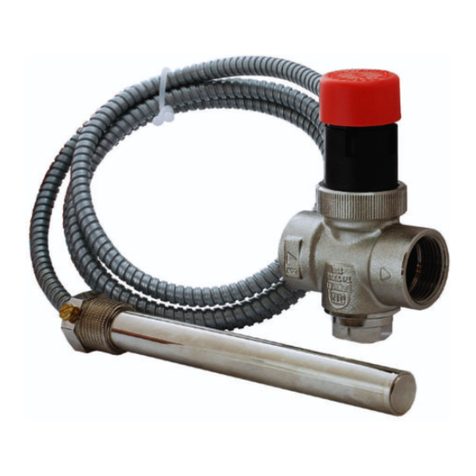
SYR
SYR ESBE VST100 Series manual
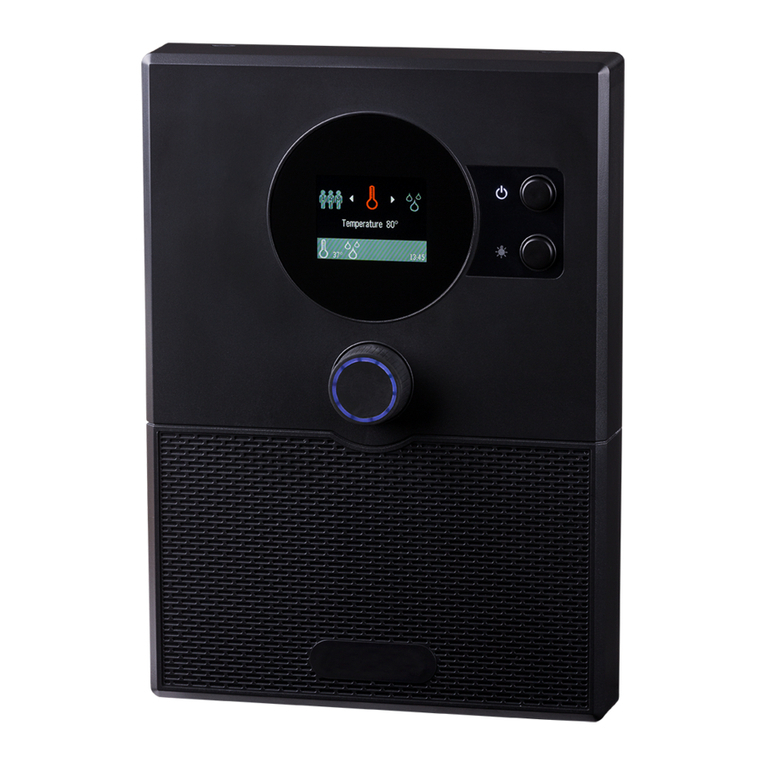
Harvia
Harvia sentiotec home.com4 Instructions for installation and use
NXP Semiconductors
NXP Semiconductors LPC54018 user manual
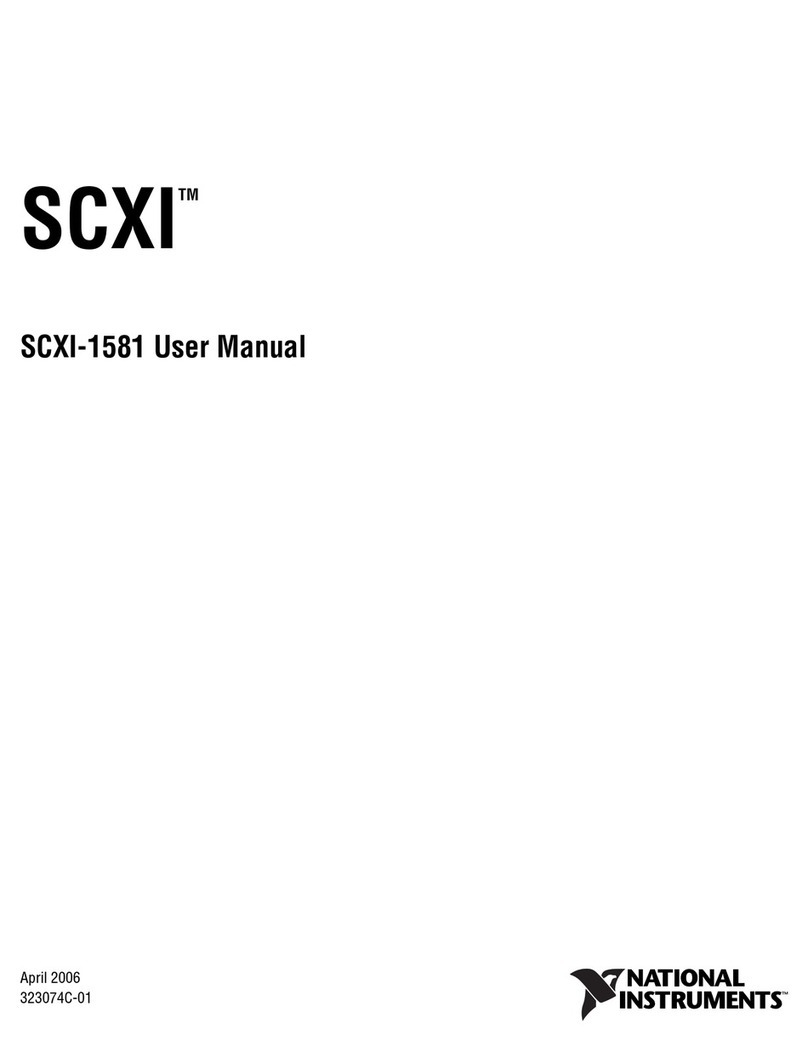
National Instruments
National Instruments SCXI-1581 user manual
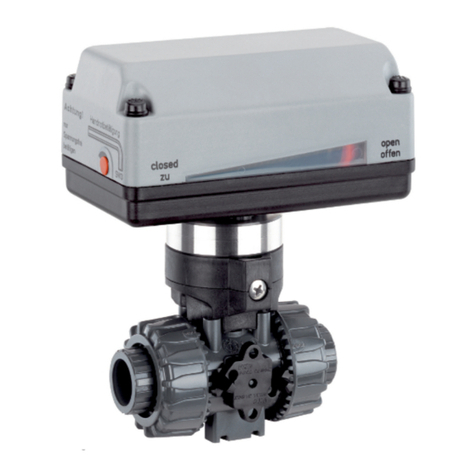
GEM
GEM 723 operating instructions
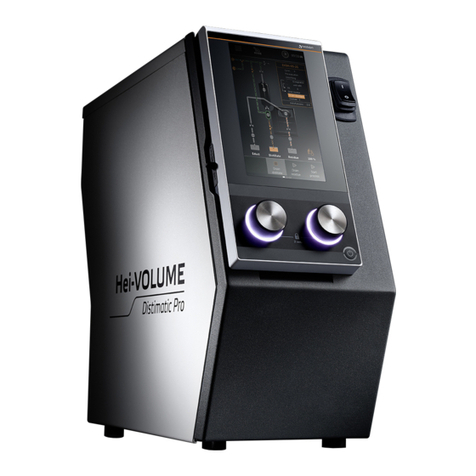
Heidolph
Heidolph Hei-VOLUME Distimatic Pro operating instructions
